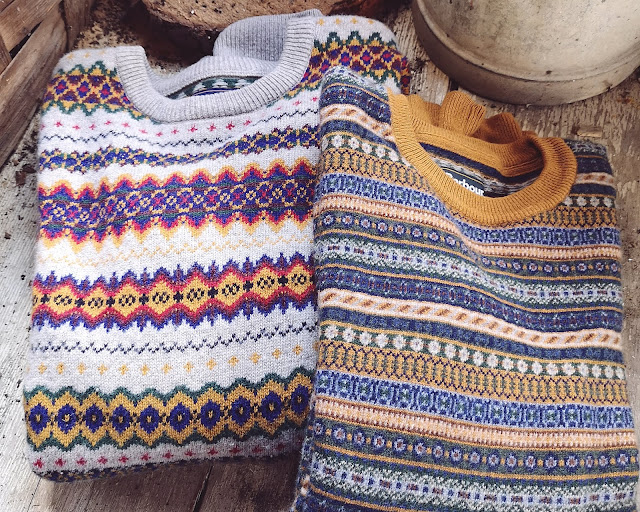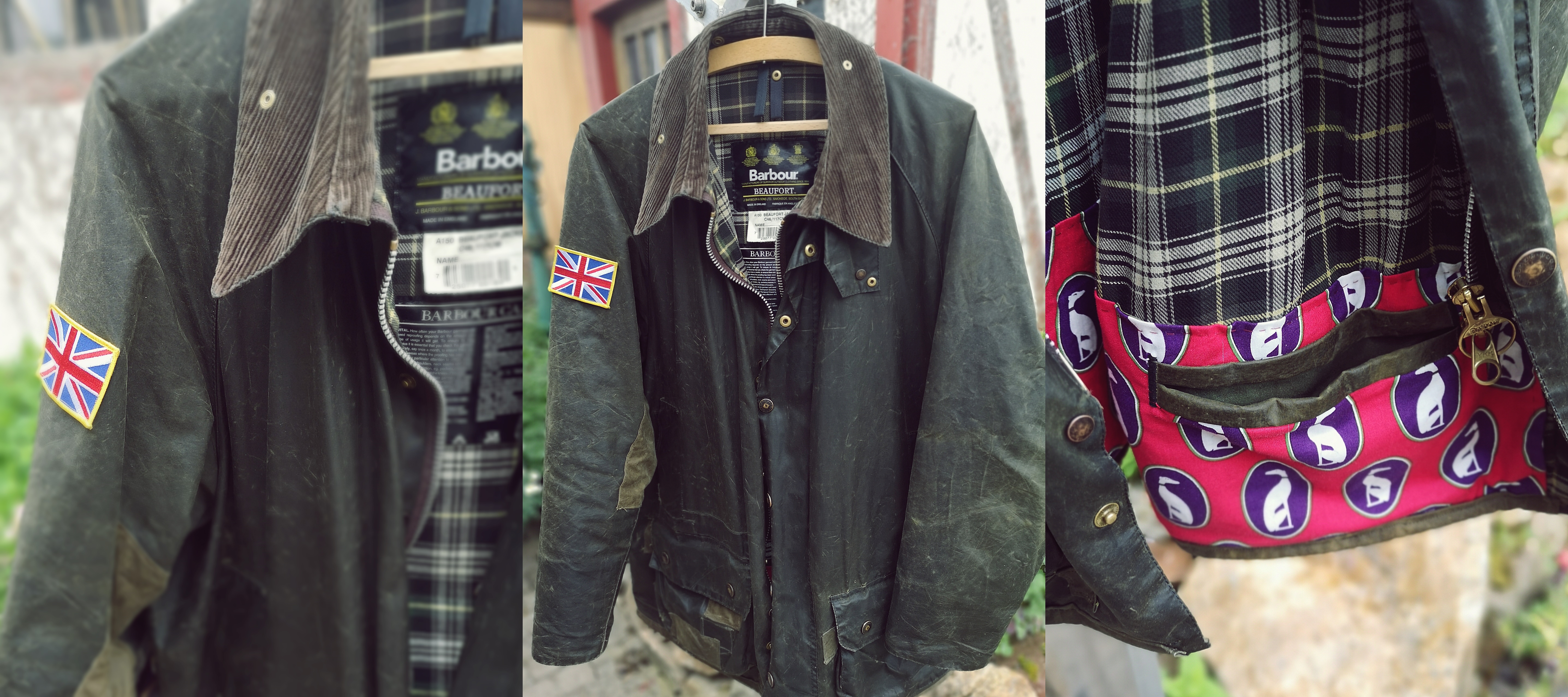Fair Isle Knitwear
I first stumbled upon the fair-isle patterns when some time ago a friend of mine wore a pullover and have been searching for the pattern in Germany ever since. Due to budget restrictions two years of constant outlook have yielded these pieces made by Barbour - even though I did not search for this brand exclusively in this case. I gifted the left one to myself last Christmas - it was the last one stocked by some small and humble equestrian outfitter, while I stumbled upon the other on a online clothing exchange platform where I bought it.
 The pattern itself represents peak Scottish craftsmanship
and tradition to me. Arised from the small island "Fair Isle" and named
respectively this knitwear seems perfectly adapted to mild but windy
environment it originated from.
The pattern itself represents peak Scottish craftsmanship
and tradition to me. Arised from the small island "Fair Isle" and named
respectively this knitwear seems perfectly adapted to mild but windy
environment it originated from.Fair Island, part of the Shetland Isles in the very far north of Great Britain is inhabited since more then 12.000 years - which is surprising due to the few resources it contains. It's rich fishing grounds play a big economical role and probably the first fair-isle sweater was worn by some rough, weather tanned fisherman made by his beloved wive during many hours. As I do virtually know nothing about knitting techniques, those interested should turn to Michael Person's "Traditional knitting: Aran, Fair Isle and Fisher Ganseys" - I guess the book looks good in any gentleman's library's section on clothes (to be found here).
But even though it is an island in the northern seas, the climate is quite mild with an absolute high temperature of 20.2° Celsius and an absolute minimum of -5.6° Celsius, which constitutes the smallest range all across Great Britain.
 After
the pattern was used on the islands where knitting was common probably since around 1500 it might have only be bought by some traveling
salesman or guest over the ages. It gained common notoriety when the
then Prince of Wales Edward wore Fair Isle sweaters and sweater vests in
the 1920's. This is due to the efforts of James A. Smith, a then major
hosiery dealer from the Shetland's Islands, who gifted such a sweater to
him (1). The Prince then had a now famous painting done in 1921 by John St. Helier Lander (2) which was then published in the 1925's Christmas issue of "The Illustrated London News" - boosting sales and commonality of the pattern and knitting products form the Shetlands overall. From there on it's popularity rose, possibly peaking when another British icon, Paul McCartney, wore the style on the cover of the "Magical Mystery Tour".
After
the pattern was used on the islands where knitting was common probably since around 1500 it might have only be bought by some traveling
salesman or guest over the ages. It gained common notoriety when the
then Prince of Wales Edward wore Fair Isle sweaters and sweater vests in
the 1920's. This is due to the efforts of James A. Smith, a then major
hosiery dealer from the Shetland's Islands, who gifted such a sweater to
him (1). The Prince then had a now famous painting done in 1921 by John St. Helier Lander (2) which was then published in the 1925's Christmas issue of "The Illustrated London News" - boosting sales and commonality of the pattern and knitting products form the Shetlands overall. From there on it's popularity rose, possibly peaking when another British icon, Paul McCartney, wore the style on the cover of the "Magical Mystery Tour". I was able to find an exact replica of the pattern worn in the picture made by "Jamieson's of Shetland", a regional wool producer. They do not list the item on their website, but I found it here for a small fortune.
Being a fan of garments produced with a long lifetime intended I was very pleased to find out that Barbour hat attached some spare wool-thread in case the sweater ever might get damaged. These are the small and thoughtful acts rarely recognized in the times we live in. Good to know there are still companies out there taking care of their customers like that.



Comments
Post a Comment